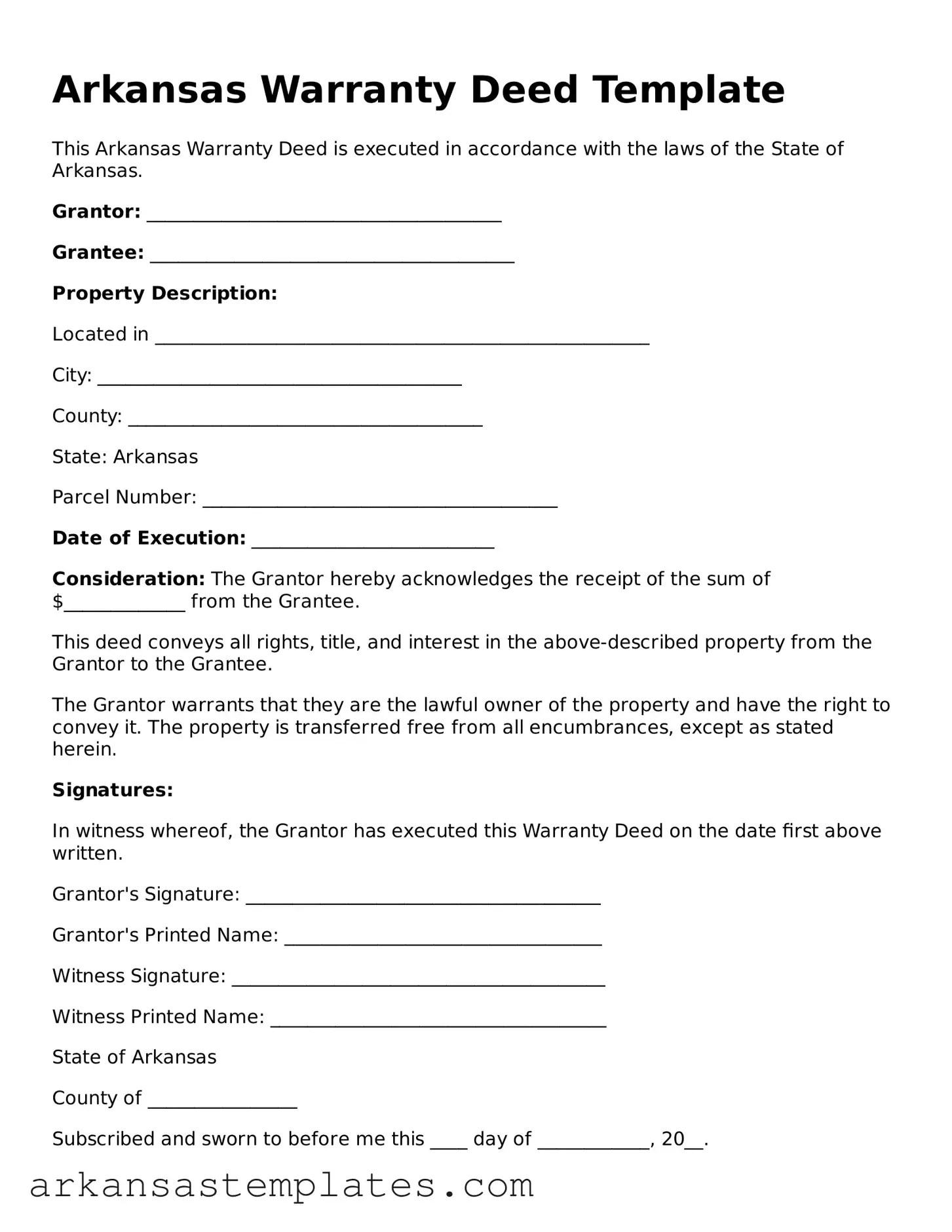Arkansas Warranty Deed Template
This Arkansas Warranty Deed is executed in accordance with the laws of the State of Arkansas.
Grantor: ______________________________________
Grantee: _______________________________________
Property Description:
Located in _____________________________________________________
City: _______________________________________
County: ______________________________________
State: Arkansas
Parcel Number: ______________________________________
Date of Execution: __________________________
Consideration: The Grantor hereby acknowledges the receipt of the sum of $_____________ from the Grantee.
This deed conveys all rights, title, and interest in the above-described property from the Grantor to the Grantee.
The Grantor warrants that they are the lawful owner of the property and have the right to convey it. The property is transferred free from all encumbrances, except as stated herein.
Signatures:
In witness whereof, the Grantor has executed this Warranty Deed on the date first above written.
Grantor's Signature: ______________________________________
Grantor's Printed Name: __________________________________
Witness Signature: ________________________________________
Witness Printed Name: ____________________________________
State of Arkansas
County of ________________
Subscribed and sworn to before me this ____ day of ____________, 20__.
Notary Public Signature: ________________________________
My Commission Expires: _________________________________
